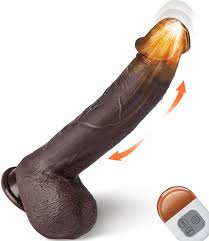Cervical Pain: Home Remedies & Medical Treatments That Work
‘Cervical Pain’ has become very common these days due to sedentary lifestyles, prolonged screen time and poor posture. It affects millions of people worldwide. Cervical pain ranges from mild to severe and can significantly affect daily life, making it necessary to find efficient treatments. This article explores home remedies and medical treatments that actually work and help alleviate cervical pain.
Understanding Cervical Pain
Common questions arise, ‘cervical kya hai?’ or ‘cervical pain in hindi’. Cervical Pain, also known as neck pain, originates from the cervical spine, which consists of seven vertebrae that support the head and the neck. The cervical spine protects the spinal cord, supports the head and provides safe passage for vertebral arteries, which are responsible for supplying blood to the brain. Cervical pain has become very prevalent in this fast-paced, technology-driven world. Cervical pain is accompanied by stiffness, headaches, limited range of motion, and even radiating discomfort in the shoulders and arms. In severe cases, it may also lead to tingling sensations, numbness, or weakness in the upper limbs, making daily tasks more challenging. Common cervical pain causes include poor posture, muscle strain, injury, arthritis, herniated disks, stress and tension, poor sleeping positions and lack of physical activity.
Home Remedies for Cervical Pain
Home remedies are generally used for mild to moderate cervical pain. They help provide significant relief when regularly practised. A few of the effective home remedies include:
Hot and Cold therapy
Applying cold press on the affected area can help reduce inflammation and reduce sharp pain. It can be safely done by wrapping an ice pack in a towel and applying it on the neck for 15-20 minutes. Heat therapy, on the other hand, hot therapy can help relax tense muscles and improve blood circulation. A heating pad, a warm towel or hot water bottle can be used for heat therapy. Switching between heat and cold therapy can reduce both inflammation and muscle stiffness effectively.
Stretching and Exercise
Different types of stretching and exercises can help alleviate cervical pain. Some of the common and easy-to-do exercises include neck tilts, chin tucks, shoulder rolls and neck rotations. Regularly doing these exercises relaxes the tense muscles in the cervical area and reduces cervical pain. Additionally, yoga and pilates help promote spine alignment and reduce tension.
Posture Correction and Ergonomics
Proper posture is essential to avoid neck-related problems. Sitting straight and keeping screens at eye level or using an ergonomic chair along with a support pillow while sleeping can help maintain proper posture throughout day-to-day activities.
Massage Therapy
A gentle massage using essential oils like peppermint or lavender can relax muscles and relieve tension. Self-massage with a foam roller or tennis ball can also target trigger points. Moreover, professional deep-tissue massage can provide long-term relief from chronic neck pain.
Herbal and Natural remedies
One of the most common natural remedies for pain relief is turmeric. Turmeric can be consumed as a tea or mixed with warm milk. Other effective natural remedies include ginger tea and magnesium supplements. Additionally, soaking in an Epsom salt bath and indulging in aromatherapy sessions can help relax tense muscles throughout the body.
Lifestyle Modifications
Engaging in regular physical activity improves blood circulation and strengthens neck muscles. Meditation, deep breathing, and relaxation techniques can help reduce stress and loosen tension. Staying hydrated and maintaining a nutritious diet help maintain muscle and overall well-being.
Medical Treatments for Cervical Pain
In severe cases of cervical pain, home remedies may fail to provide relief and medical intervention may be necessary. Following are some of the commonly recommended medical treatments:
Over-the-counter (OTC) Medications
Medications like ibuprofen or naproxen can reduce pain and inflammation. Acetaminophen (Paracetamol) is effective for mild to moderate pain relief. Topical Pain Relief Creams and Gels provide localized relief when applied to the affected area.
Prescription Medicines
Muscle Relaxants, Corticosteroid Injections, and Neuropathic Pain Medications all come under prescribed medications which help reduce cervical pain. However, these should always be consumed as per the prescribed dosage. Sometimes, antidepressants are also prescribed for chronic pain linked to stress and anxiety.
Physical Therapy
A physical therapist can develop a personalized exercise program to strengthen neck muscles and improve mobility. Manual Therapy techniques, such as spinal manipulation, can relieve tension along the cervical spine. Moreover, Ultrasound Therapy and electrical stimulation can help reduce pain and promote healing.
Chiropractic Care
Chiropractors perform spinal adjustments that help improve spinal alignment and relieve nerve pressure. Regular chiropractic sessions can enhance spinal health and mobility.
Acupuncture
It involves inserting needles into specific points of the body to reduce pain and improve energy flow. It has been found effective for chronic neck pain and tension headaches.
Surgery
Surgery should be kept as the last resort when all conservative treatments fail. Surgery is typically recommended for severe cases of herniated discs, spinal stenosis, or nerve compression. Surgical procedures like cervical discectomy or spinal fusion are the ones generally recommended. Post-surgery rehabilitation often involves physical therapy and intense follow-up care.
When to Seek Medical Help?
A doctor could be consulted in the following cases:
- Pain is there for more than a few weeks.
- Severe pain radiates to the arms or legs.
- Numbness, weakness, or loss of coordination occurs.
- Difficulty in swallowing or breathing arises.
- Pain is accompanied by unexplained weight loss or fever.
- There is a history of trauma, such as a fall or accident.
Conclusion
Cervical pain can be effectively managed through a combination of home remedies and medical treatments. Simple lifestyle changes, targeted exercises, and ergonomic adjustments can prevent neck pain from becoming chronic. However, if the pain persists or worsens, seeking professional medical advice is crucial. This is where Niva Bupa comes in with its diverse health insurance plans. Niva Bupa provides comprehensive coverage that includes consultation fees, diagnostic tests, hospitalization expenses, and post-treatment care, ensuring financial security in times of need. With the right health insurance policy, individuals can access quality treatment for cervical pain, whether it requires physiotherapy, advanced diagnostics, or specialized medical procedures.













